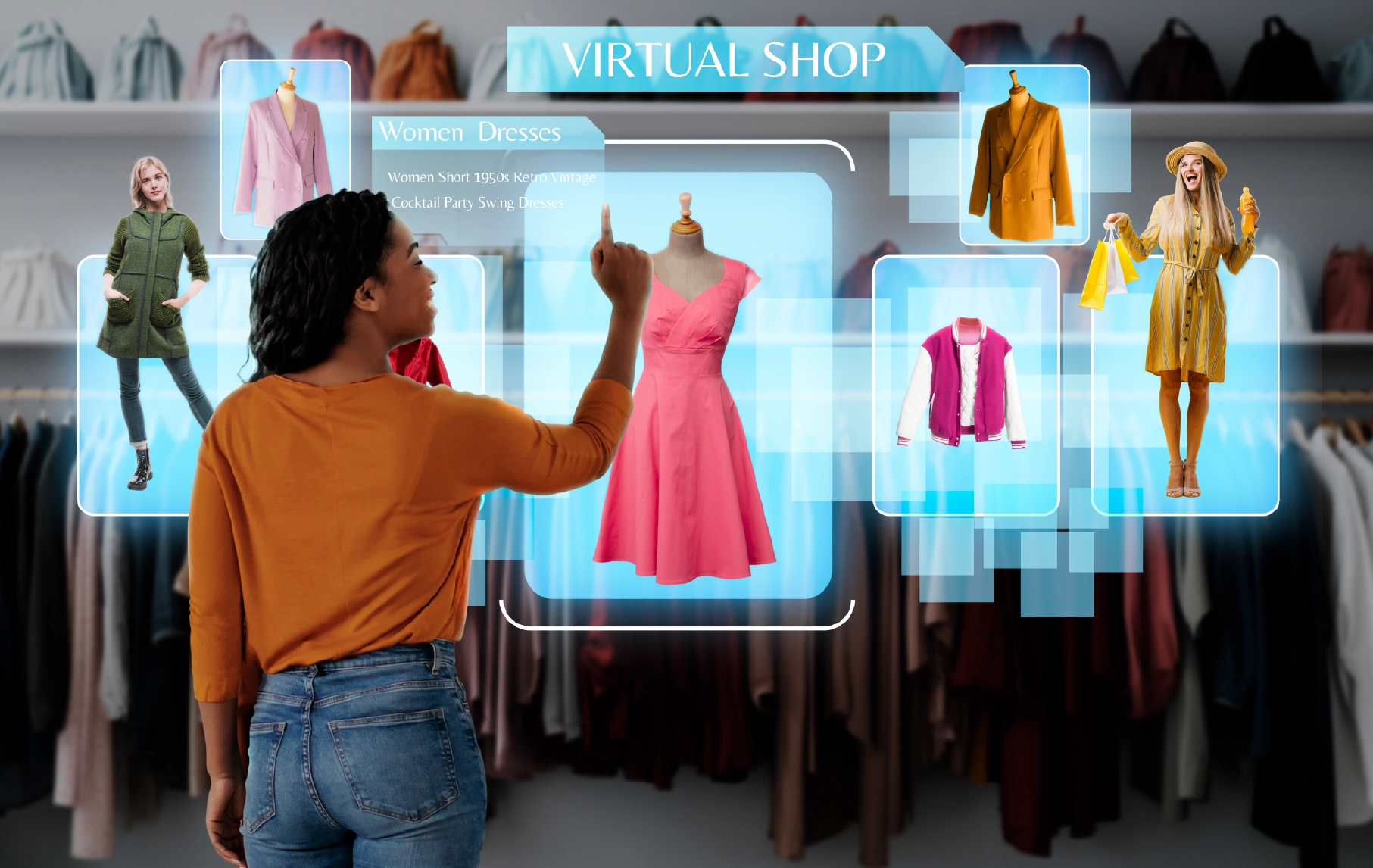Dubai retailers are creating customer experiences anew. The move toward immersive tech is no longer hypothetical; it is already on its way. From high-end boutiques to lifestyle brands, everyone is actively incorporating virtual reality for retail in Dubai into their customer plans.
The changes in interaction are not only the shifting platforms; it’s how they interact with their products. Buyers are no longer limited to walking into physical stores or experiencing 2D pictures in e-commerce.
Now they are enabled to walk around in interactive 3D environments that duplicate the layouts, designs, and atmosphere of the real store. With more eyes being brought to e-commerce-based virtual showrooms, the shift doesn’t feel so much of a trend as it does the natural evolution.
The Role of the Digital Showroom in Dubai Retailing
A digital showroom in Dubai does much more than present visual material. An immersive space narrative is established, an experience in which the consumer no longer looks at products through a digital screen but directly engages with them.
These are modeled experiences where physical gestures mimic walking up and down the aisles, approaching a shelf, and opening a virtual drawer. It identifies the showroom with an expansion of the brand identity, a custom-commissioned experience that similarly embodies its values and aesthetics.
This is to deal with some of the most prevalent challenges faced by UAE-based retailers at once. It bridges global and domestic audiences, closes stores 24/7, and supports the launch of the product, saving the cost of large numbers of physical displays.
A well-built digital showroom in Dubai has also greatly made the brand flexible and easily reachable, according to the modern behavior of buyers.
Virtual Reality and the New Buying Journey
In the case of virtual reality for retail in Dubai, the customer path has moved from click-to-cart to something much more complex. Picture a consumer shopping a new fashion line, not by swiping thumbnails, but by strolling through an elegantly lit virtual shop.
Every piece can be inspected in detail, spun around, layered, and evaluated under various lighting conditions. For home furnishings, electronics, or household items, the experience is even more compelling.
A shopper may pass through a full-size apartment furnished entirely with inventory offerings. They can open doors, repaint the walls, rearrange layouts, and try on lighting changes, actions that were previously impossible with e-commerce alone.
Such an immersive format provides value beyond entertainment, enabling customers to make more informed purchasing decisions, which in turn lowers return rates and enhances overall satisfaction.
How Virtual Showrooms for E Commerce Are Created
Behind each successful e-commerce-based virtual showroom are designers, 3D artists, developers, and system architects. In such cases, the environments are built through game engines like Unreal or Unity; the resulting environment becomes a seamless movement with realistic involvement.
The objects’ texture, light, and physics are emulated as much as possible to the real world. But the interface is only half the equation. An active virtual showroom interfaces with payment gateways, customer profiles, inventory data, and sometimes even AR tools.
A user might choose a product in a showroom and then beam it into their living room via their phone, for example. This easy transition between these platforms emphasizes one of the primary concerns of innovative retailers in Dubai: control and utility for the user.
Real Applications in Dubai’s Consumer Market
Dubai’s luxury market is among the first to adopt this format. The virtual showroom in Dubai replicates a luxury fashion company’s flagship store. Consumers could visit, look through themed seasonal collections, engage with high-fidelity product models, and arrange an appointment, virtually, without leaving their homes.
A luxury electronics store created an e-commerce-driven virtual showroom where consumers can browse around televisions, audio equipment, and appliances laid out on a completely rendered showroom floor. Users can view demo clips, compare features, and check compatibility with installed products, all within the experience.
On the other hand, lifestyle brands are integrating virtual reality for retail in Dubai into product releases and pop-up campaigns. These temporary digital stores enable users to browse limited collections, join virtual events, and broadcast their experience on social media.
Benefits Beyond the Showroom Floor
For brands, virtual spaces are not merely about displaying products; they reveal rich insights into behavior. With gaze tracking, movement analysis, and interaction mapping, businesses can see the way people navigate spaces, where their attention goes, and what draws most interest.
That sort of information is hard to access in a physical store. There’s also scalability. A digital showroom in Dubai can be localized to various languages, made festive around regional holidays, or changed rapidly based on product launches or changes in inventory. No build or disassembly necessary.
Final Thoughts
The use of virtual reality for retail in Dubai and the ongoing expansion of e-commerce-based virtual showrooms are evidence of a pivot in how consumers wish to shop and brands wish to be presented. Rather than being mere digital tools, they represent stages for storytelling, discovery, and connection.
Limina Studios provides comprehensive development services for brands wanting to build their immersive shopping experiences, from 3D and virtual showroom design to e-commerce integration. Our expertise also extends into local knowledge and international best practice, enabling brands to turn spaces into experiences and vice versa.






















